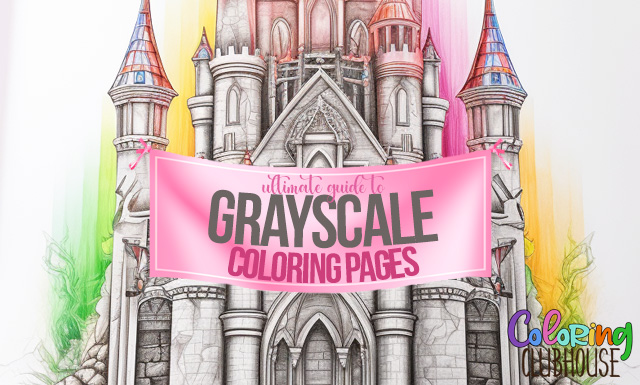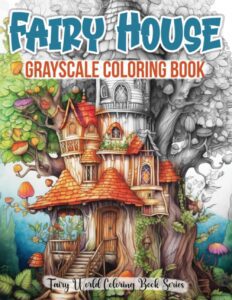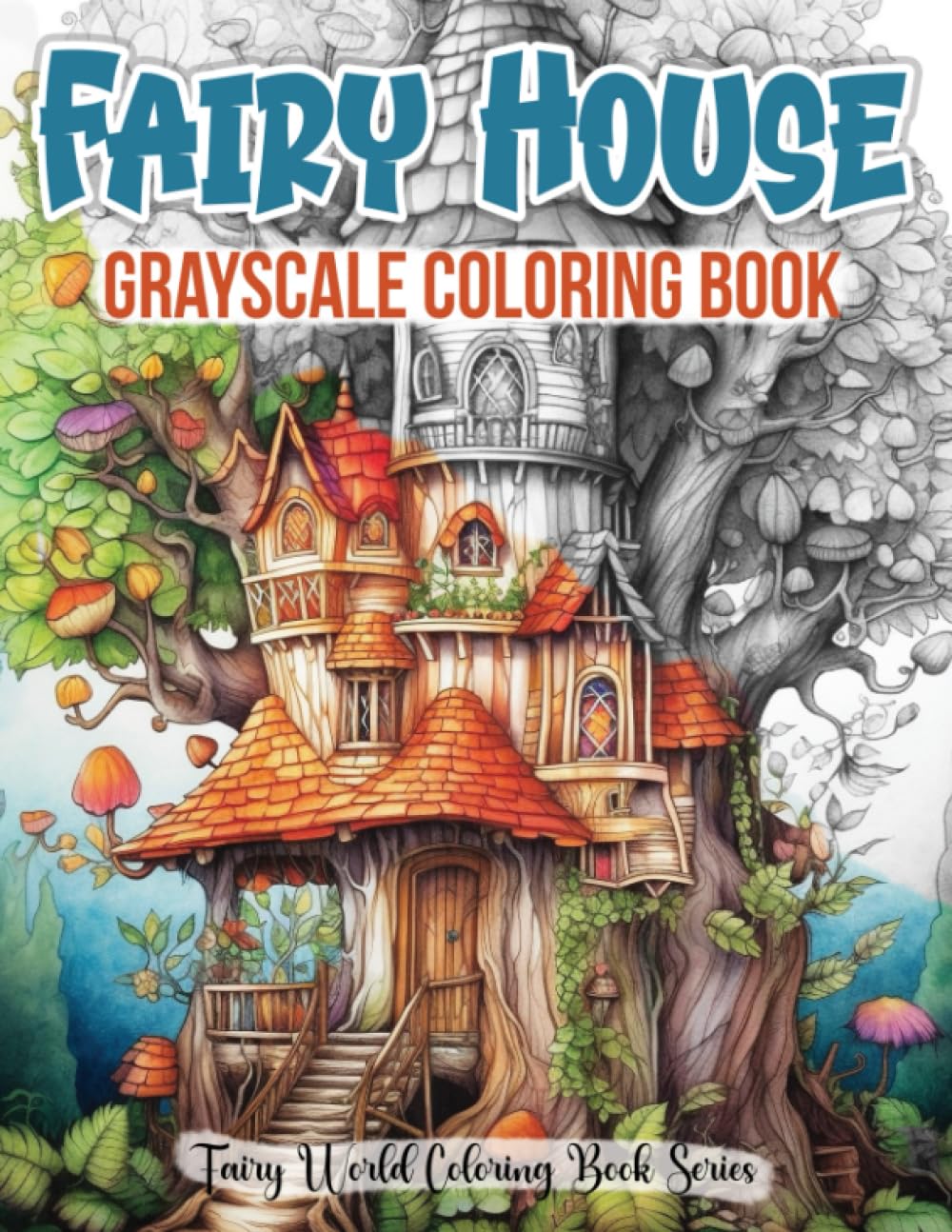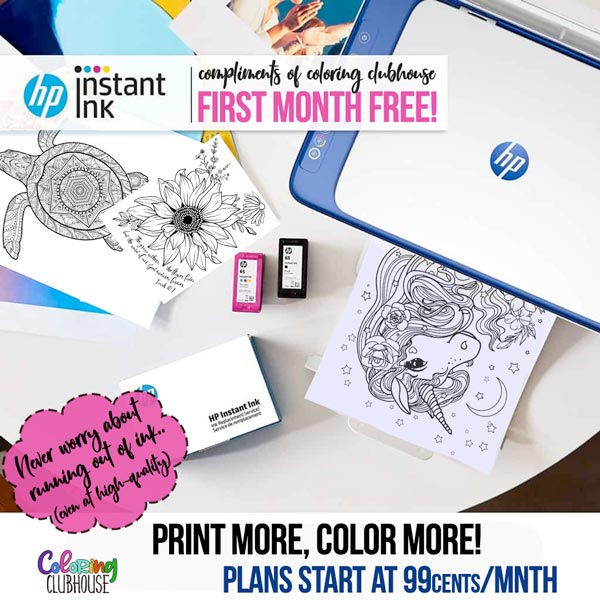
Grayscale Coloring Pages: The Ultimate Guide
Welcome, budding artists and seasoned colorists alike! This guide will help you navigate the world of grayscale coloring pages, whether you’re just dipping your toes in or looking to refine your skills. Let’s dive in!
Understanding Grayscale Shading
Grayscale coloring pages are unique because they already have shading built in. You can achieve a three-dimensional look without having to shade at all.
The grayscale tones act as a guide for where to place your darker and lighter colors. The darker the grayscale, the darker the color should be. This will help give your coloring a more three-dimensional look without worrying about complex shading techniques.
Types of Grayscale Coloring Pages: Which to Choose?
- Use a grayscale coloring page with darker shadows and more contrast if you’re new to grayscale coloring.
- If you’re more experienced and want control over your shading, choose coloring pages with lighter shading.
My grayscale coloring books have both versions included inside!
Grayscale Coloring For Absolute Newbies
Tools of the Trade
Colored Pencils: Start with a basic set of colored pencils. They’re easy to control, and you can find them in a wide range of colors. Look for a set that includes a variety of shades for each color.
White Gel Pen: A white gel pen is your secret weapon for adding highlights and bringing your images to life.
Blank Paper: Place a blank piece of paper behind the page you’re coloring. The blank sheet will prevent any color from bleeding through and damaging the other pages.
Basic Adult Coloring Techniques
Pressure Control: You don’t need to press hard on your pencil to get vibrant colors. In fact, applying too much pressure can damage your pencils and coloring page.
Instead, try layering your colors to achieve depth and intensity. It’s less scary that way too!
Directional Coloring: Pay attention to the texture of what you’re coloring. For example, if you’re coloring hair, color in the same direction as the hair strands. It’ll make your coloring look more realistic.
Sharpening: Keep your colored pencils sharp; it’ll give you more control over your coloring and allow you to add fine details.
For the More Experienced Coloring Artist
Advanced Coloring Tools
Blending Pencils: These are clear pencils that you can use to blend your colors, creating smooth transitions and gradients.
Erasers: A good eraser is essential for correcting mistakes and creating highlights.
Markers: Markers can provide vibrant colors and cover large areas quickly. However, they can also bleed through the paper and are more challenging to blend than colored pencils.
If you choose to use markers, make sure to put a blank piece of paper behind your coloring page to prevent bleed-through. Also, consider using alcohol-based markers, as they are easier to blend than water-based markers.
Advanced Grayscale Coloring Techniques
Shading: Pay attention to the grayscale values on your page to give your coloring depth and dimension. Color darker areas with darker shades and lighter areas with lighter shades.
Highlighting with a White Gel Pen: Use a white gel pen to add unique highlights to your coloring pages. Your image will pop and have a three-dimensional look.
Layering: Feel free to layer different colors to create new shades and depth. Start with your lightest color and gradually add darker layers.
Texture: Pay attention to the texture of what you’re coloring. Try to mimic this texture with your coloring techniques. For example, if you’re coloring an animal, use short, quick strokes to mimic the realistic texture of the fur.
Blending: Use your blending tools to smooth the transitions between different colors. Blending is essential to give your coloring a more polished and realistic look.
Petroleum Jelly Blending: Apply a small amount of petroleum jelly to the tip of your pencil before applying it to the area you want to blend. This is a great way to smooth out the colors and create a seamless transition. However, use this technique sparingly as it can make the paper greasy if overused.
Fixative: After you’ve finished your masterpiece, do you need to use a fixative to protect it from smudging and fading? If you plan to display your artwork or you use a medium that’s prone to smudging (like pastels or charcoal), a fixative can be a good idea. For colored pencils on a coloring page, you generally won’t need one unless you’ve used a lot of layers or heavy pressure.
Underpainting: Apply a layer of color (usually a complementary color) before adding your primary colors. This technique helps add depth and complexity to your coloring.
Glazing: This involves applying a thin, transparent layer of color over another color. Glazing can create interesting color effects and can also be used to adjust the color or tone of an area.
Printing Coloring Pages: Choosing the Right Paper
If you’re printing your grayscale coloring pages, the type of paper you use can make a big difference. Cardstock or heavyweight paper is often a good choice because it can handle the pressure of coloring without tearing. It’s also less likely to bleed with markers or wet media.
Displaying Your Finished Coloring Pages
Once you’ve finished your masterpiece, you’ll want to display it! Here are a few ideas:
- Framing: Frame your coloring page and hang it on your wall. Showcase your work and add a personal touch to your home decor!
- Scrapbooking: Add your coloring pages to a scrapbook or keep them in a binder (use page protectors). What a fun way to keep track of your progress and see how your skills improve over time.
- Gifts: Your colored pages can make thoughtful, personalized gifts. Consider giving them to friends or family for special occasions.
- Digital Display: Consider scanning your artwork and displaying it digitally. Share your work online. This is ideal if you have limited physical space for display.
More Coloring Tips
Study Color Theory: Understanding color theory can help you make more informed color choices and can also help you create more harmonious color schemes.
Experiment with Different Mediums: Don’t limit yourself to colored pencils or markers. Try using different mediums together (like colored pencils and pastels) to create unique effects.
Most of All, Have Fun!
Remember, the most important thing is to enjoy the process. Coloring should be a relaxing and enjoyable activity.
Don’t worry about making everything perfect. Have fun, and let your creativity flow!



